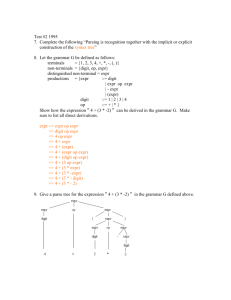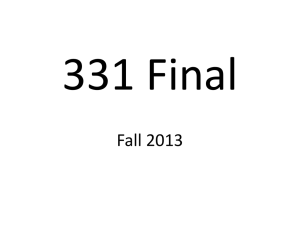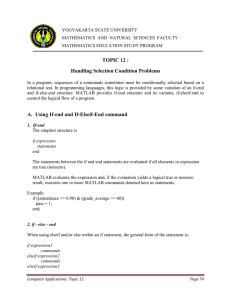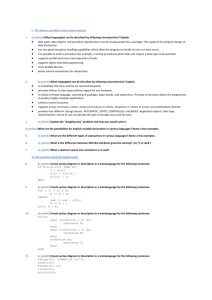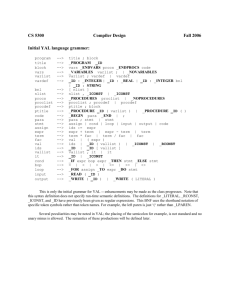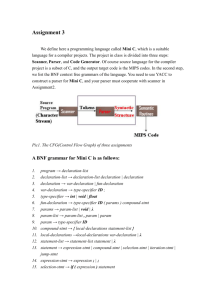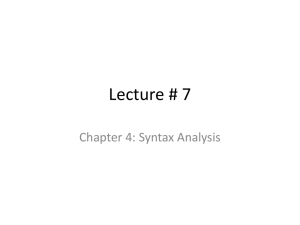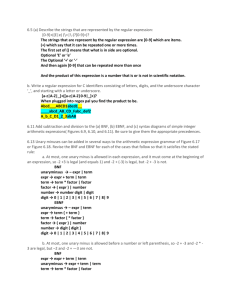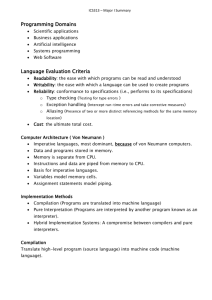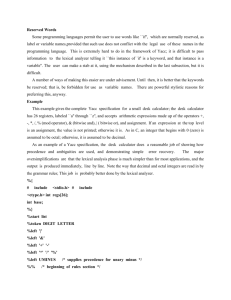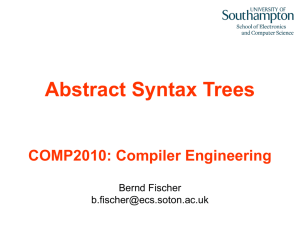True or false: Punctuation such as semi
advertisement
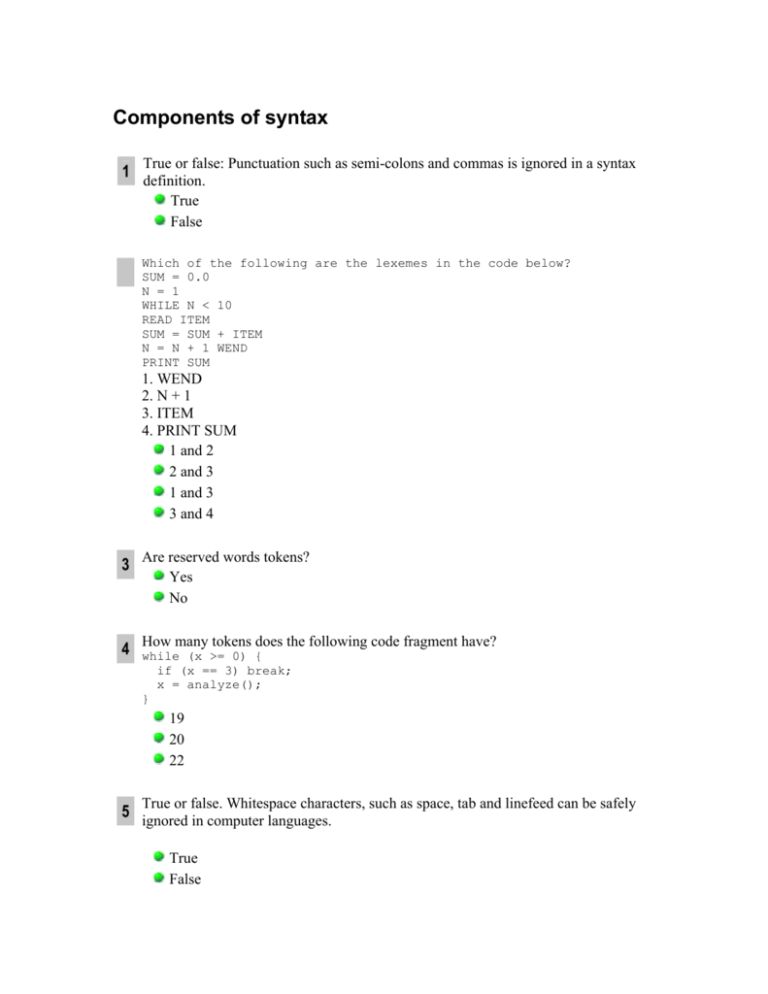
Components of syntax
1
True or false: Punctuation such as semi-colons and commas is ignored in a syntax
definition.
True
False
2
Which of the following are the lexemes in the code below?
SUM = 0.0
N = 1
WHILE N < 10
READ ITEM
SUM = SUM + ITEM
N = N + 1 WEND
PRINT SUM
1. WEND
2. N + 1
3. ITEM
4. PRINT SUM
1 and 2
2 and 3
1 and 3
3 and 4
3
Are reserved words tokens?
Yes
No
4
How many tokens does the following code fragment have?
while (x >= 0) {
if (x == 3) break;
x = analyze();
}
19
20
22
5
True or false. Whitespace characters, such as space, tab and linefeed can be safely
ignored in computer languages.
True
False
Types of grammar, BNF.
1
True or false. A token is called a non-terminal symbol in BNF.
True
False
2
True or false. Terminal symbols are surrounded by diamond brackets (<>).
True
False
3
True or false. The order of elements on the right-hand side of a rule is unimportant.
True
False
4
True or false. BNF allows only one non-terminal on the left-hand side of a rule.
True
False
5
True or false. Recursion between rules is allowed in BNF. e.g.
<nt1> ::= ... <nt2> ...
<nt2> ::= ... <nt1> ...
True
False
Parse trees.
1
Given the grammar:
<e> ::= <b> | <b><e>
<b> ::= [ <e> ] | []
which of the following trees show the correct structure for the sentence [[[]][]]
?
1
2
2
Given the grammar rule:
<expr> ::= <num> | <expr> + <expr>
Which of the following are correct derivations for <expr> + <num> ?
<num> + <expr> + <num>
<expr> + <expr> + <num>
<num> + <num> + <num>
<expr> + <expr> + <expr>
3
True or false. A parse tree can be infinitely big for a given finite sentence.
True
False
4
True or false. There is only one possible grammar for integers with given finite
range of values.
True
False
5
True or false. A parse tree can only have one root node.
True
False
Ambiguity in grammars.
1
True or false. Does the ambiguity in the following rule matter semantically?
<expr> <num> | <expr> + <expr>
True
False
2
True or false. C allows expressions like x = y = 0 where the assignment operator is
right associative. Is the following grammar ambiguous?
<expr> ::= <assign> | <id> | ...
<assign> ::= <id> = <expr>
True
False
Syntax: EBNF
1
Which of the following EBNF forms removes the recursion in
<par-list> ::= <par> | <par> , <par-list>
par-list = {',' par}
par-list = par {par ','}
par-list = par ',' {par}
par-list = par {',' par}
2
Which of the following EBNF forms can replace the alternatives in
<end-tag> ::= end | end <id>
end-tag = ['end' id]
end-tag = ['end'] id
end-tag = 'end' [id]
end-tag = 'end' ['end' id]
3
True or false. Can the repetition in the following EBNF rule be replaced by recursion
in a single BNF rule?
block = 'begin' {stmt ';'} stmt 'end'
True
False
Syntax diagrams
1
Which EBNF rule is the equivalent of the diagram
float = ('0' | {digit}+) '.' {digit}+
float = '0' | {digit}+ '.' {digit}+
float = ('0' {digit}+) '.' {digit}+
float = ('0' | {digit}) '.' {digit}
2
True or false. Are the following diagrams equivalent?\
1.
2.
True
False
